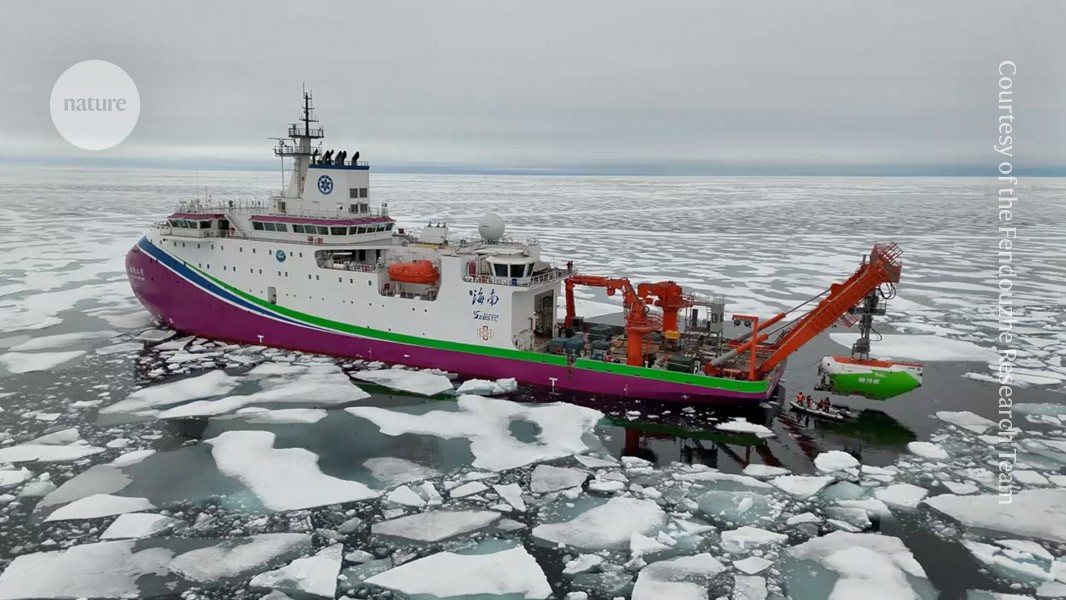The submersible Fendouzhe being deployed off a Chinese icebreaker in the Arctic Ocean.Credit: Courtesy of the Fendouzhe Research Team
Chinese scientists have become the first to visit one of Earth’s most remote and geologically intriguing realms: an underwater volcanic ridge in the Arctic Ocean.
The expedition, which concluded late last month, explored the eastern part of the Gakkel ridge — part of the global system of submerged mountain chains that play a key part in plate tectonics. A team of scientists took a submersible vessel beneath the Arctic sea ice and completed more than 40 dives, going as deep as 5,277 metres.
The analyses are far from complete, but this section of the Gakkel ridge might have hot-water vents that spew from the sea floor. Similar vents on the western, and better-explored, part of the ridge are home to bizarre ecosystems that thrive far from the reach of sunlight. They provide scientists with some of the best opportunities to understand how life might arise and evolve in icy oceans on worlds beyond Earth, such as on Jupiter’s ice-encrusted moon Europa.
Missing piece
Expedition scientists will spend the next few years studying the rocks, water and animals that they gathered during the submersible dives. “It’s the last piece of the puzzle” to understanding this unique Arctic environment, says Xiaoxia Huang, a marine geophysicist at the Institute of Deep-Sea Science and Engineering in Sanya, China, and the expedition’s chief scientist.
The Gakkel ridge stretches from off the coast of Greenland to Siberia. Volcanic eruptions along it create new sea-floor crust, which spreads away from the ridge at some of the slowest rates on the planet — slower than the rate at which fingernails grow. Yet, somehow that sluggish geology manages to produce enough heat and chemical energy to sustain hydrothermal vents on the sea floor.
In 2001, a US–German expedition discovered hydrothermal vents on the western part of the Gakkel ridge1. Researchers have returned multiple times to that area to study the rich chemistry and biology of the deep, dark vent system2,3.
But the eastern side of the ridge is more remote and challenging to explore. Russian scientists have conducted some surveys, but the latest Chinese expedition is the first intensive geological survey and diving expedition in the area, Huang says.
“It’s so hard to get there that anything anybody does is almost guaranteed to be exciting and different and new,” says Christopher German, a marine geochemist at the Woods Hole Oceanographic Institution in Massachusetts. “The Chinese expedition is poised to yield significant new insights,” adds Elmar Albers, a marine geoscientist at the Alfred Wegener Institute in Bremerhaven, Germany.
Risky expedition
The Chinese expedition, organized by the Ministry of Natural Resources and the Chinese Academy of Sciences, paired a deep-sea crewed submersible, named Fendouzhe, with an ice-breaker. It was the first time Fendouzhe, which has explored many parts of the oceans including the Mariana Trench, has visited the Arctic region. Other expeditions have used remotely operated vehicles to explore the Gakkel Ridge, because of the dangers of the vehicle becoming trapped under floating sea ice.





